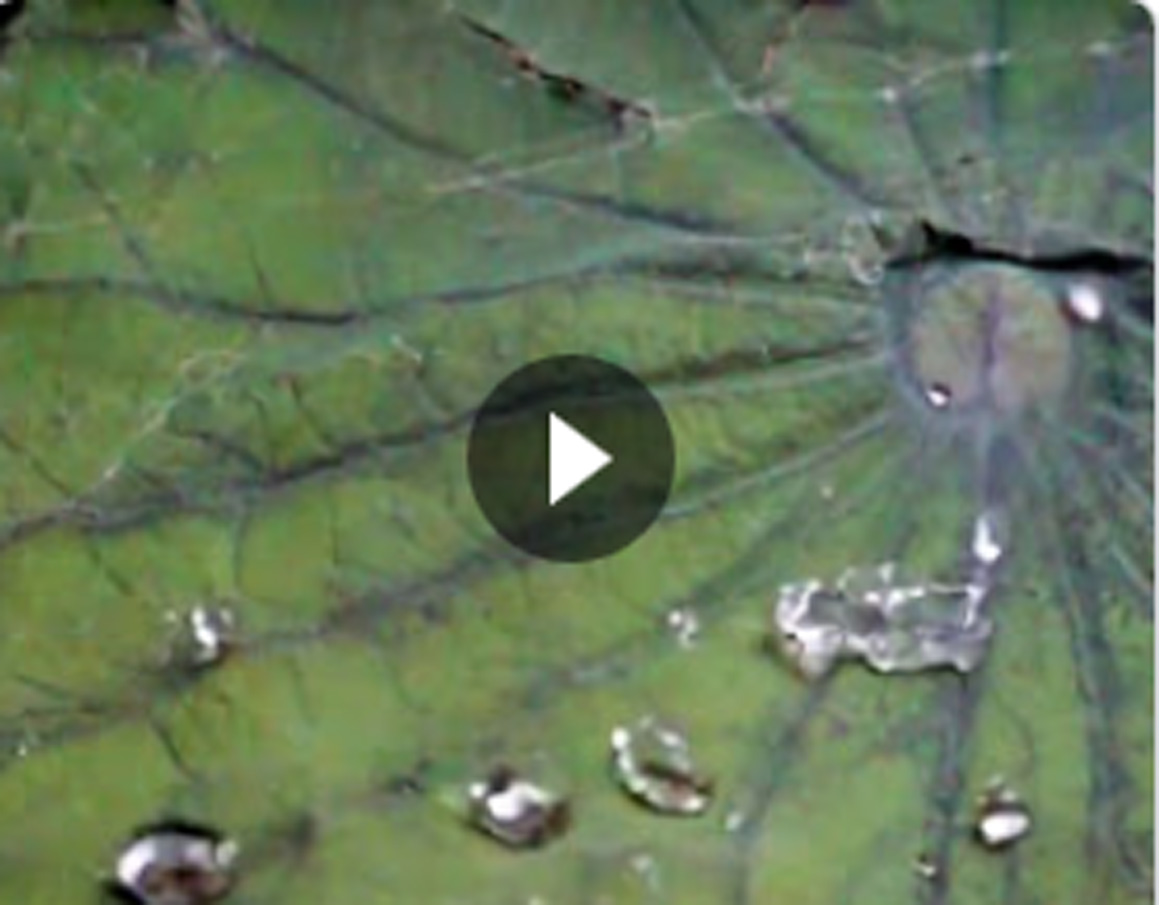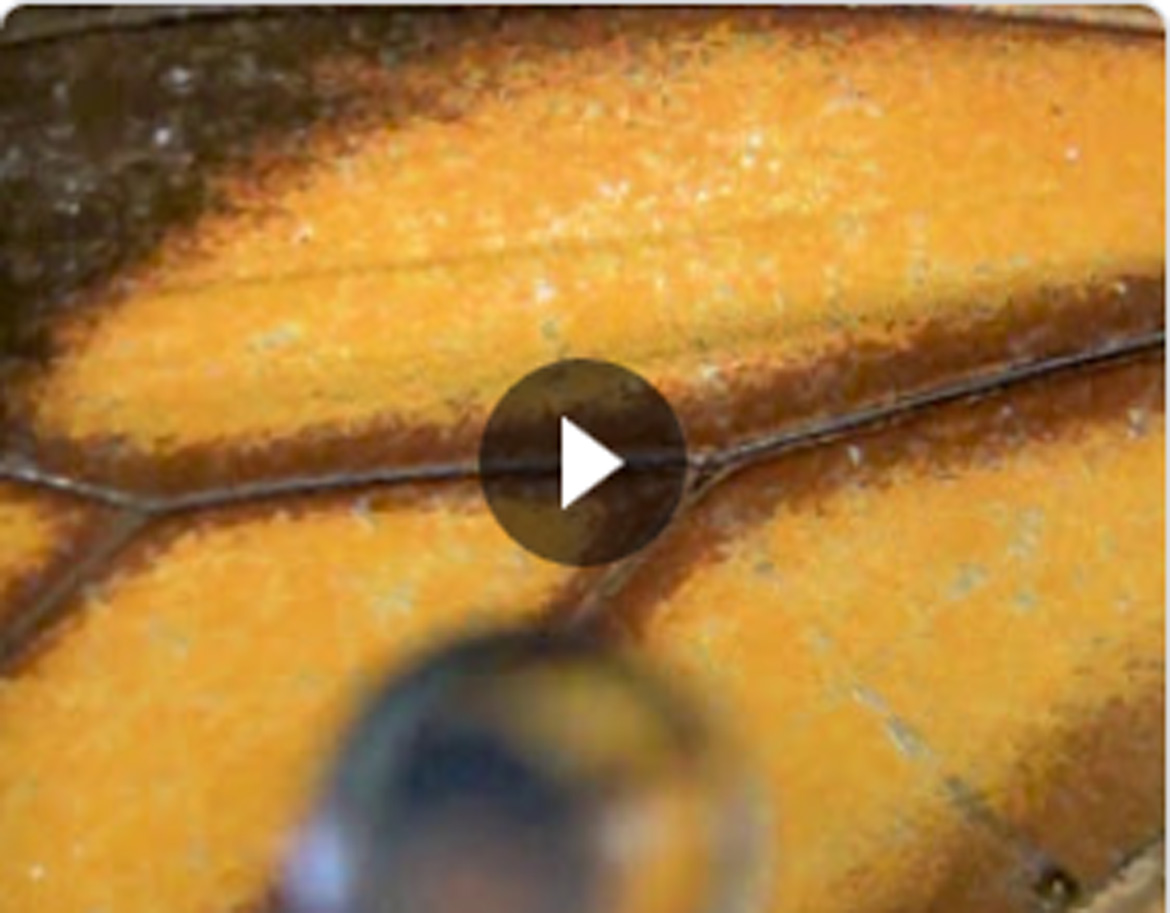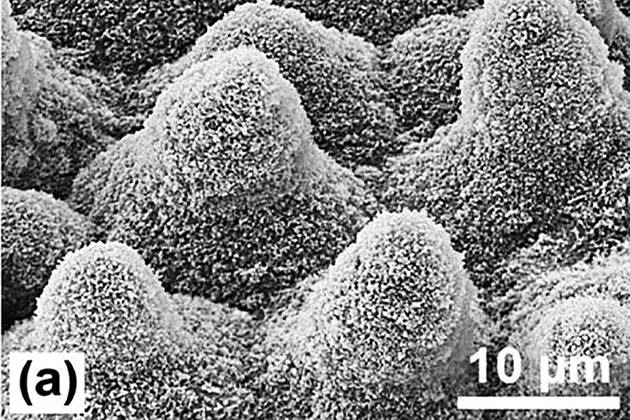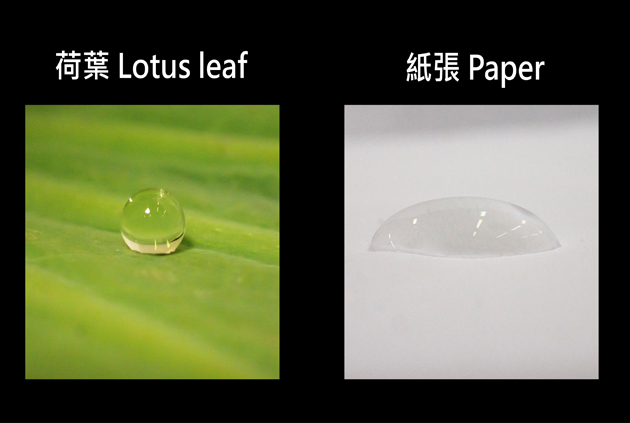title 1
Superhydrophobicity Keeps Lotus Leaves Clean
Published on 31 December 2020

Video demonstrates the superhydrophobicity of lotus leaves
The video above demonstrates the marvellous water repellency of lotus leaves. However, if you have ever touched a lotus leaf, you may recall that its texture is not particularly smooth. So why the lotus leaves repel water much better than the leaves of other plants?
There are pictures captured by optical microscope in the video which show the numerous fingertip-like bumps (papillae) on a lotus leaf surface. A tiny bump measures only about 10 microns across and is much thinner than a hair. When observed with an electron microscope, the bumps can be seen covered by countless nanoscale wax tubules (with a diameter around 100 nanometres). Wax is hydrophobic, or in simpler terms, it dislikes water.
When water contacts with the lotus leaf, the bumps covered by hydrophobic wax tubules and the water's own surface tension prevent the water from seeping into the spaces between the bumps, and facilitate the water to hold itself as a spherical droplet. The actual contact area between the droplet and the leaf surface is tiny. With less force of adhesion, the droplet can roll off easily. The video also shows that water does not turn into spherical droplets on a piece of paper. The water tends to stay and wet the paper, instead of rolling off.
Growing in rivers and ponds with slow water flow, the lotus has evolved leaves with excellent water repellency to minimize water accumulating on the leaves. The rolling water droplets can also sweep the mud and dust away from the surface, preventing the blockage of sunlight or leaf rotting from happening. Beside lotus leaves, butterfly wings also have excellent water repellency thanks to their rough surface structures. Butterfly wings are covered by numerous scales. The arrangement of scales and the tiny nanostructure on them ensure that water rolls off the wings swiftly and does not hinder the butterfly's flight, especially in rain.

Slow motion video shows water rolling off the butterfly wings
Organisms have evolved different body structures and abilities to adapt to the environment. They provide us with inspiration for developing new products. The lotus effect has been applied to daily water-repelling products. Have you ever used these products?







